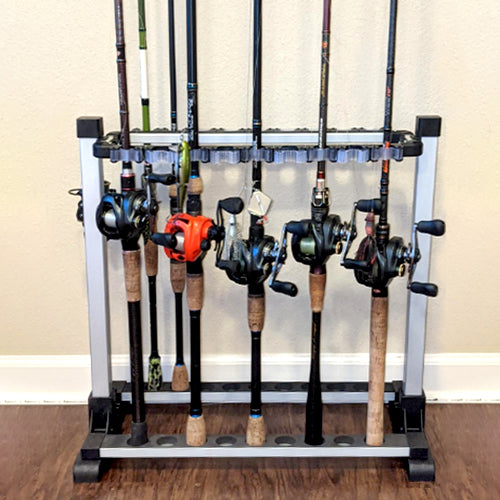Maintaining and caring for your fishing pole holder: Tips and techniques
Body
Fishing is a popular pastime for people of all ages. When you head out on the water or to a nearby lake or stream, you want to make sure you have all the necessary gear to have a successful trip. One important piece of equipment that often gets overlooked is the fishing pole holder.

Having a reliable fishing pole holder not only makes your fishing experience more enjoyable, but it also allows you to focus on fishing rather than constantly worrying about where to place your fishing pole. In this article, we will take a look at some important tips and techniques for maintaining and caring for your fishing pole holder.
Choose the Right Material
Before we dive into maintenance tips, it's essential to choose the correct material for your fishing pole holder. The most common materials used for fishing pole holders are plastic, aluminum, and stainless steel.
Plastic fishing pole holders are lightweight and affordable, making them a popular choice. However, they can easily crack or break under the extreme pressure of large fish, and they are not as durable as other materials.
Aluminum fishing pole holders are sturdier compared to plastic, and they come in various sizes, making them a versatile option. However, they tend to oxidize over time and may require regular cleaning to maintain their appearance.
Stainless steel fishing pole holders are the most durable of the three materials. They are resistant to rust and corrosion and can withstand significant pressure. They are also the most expensive. Choosing the right material ensures that your fishing pole holder will work appropriately and last for years to come.
Regular Cleaning
Regular cleaning is a crucial aspect of maintaining your fishing pole holder, especially if it's made of aluminum. Over time, the holder can accumulate dirt and grime, making it look unappealing and reducing its functionality.
To clean your fishing pole holder, you'll need a soft cloth, soapy water, and a non-abrasive sponge. Mix the soap with warm water, dip the sponge into the solution, and wipe the holder clean. Rinse the sponge and go over the holder again to remove any remaining grime. Be sure to dry the fishing pole holder thoroughly after cleaning.
Proper Storage
Proper storage is another essential aspect of maintaining your fishing pole holder. When not in use, store your fishing pole holder in a cool, dry place, away from direct sunlight. Direct sunlight can cause the holder's material to become brittle, reducing its efficiency over time.
Additionally, avoid storing your fishing pole holder in areas with high humidity or moisture. Excess moisture can lead to rust and corrosion, which can damage the holder's material and render it useless.
Avoid Overloading
It's essential to remember that fishing pole holders have weight limits. Overloading your holder or adding excessive pressure to it can cause permanent damage, rendering the holder useless. The weight limit for most fishing pole holders is usually listed on the packaging or the manufacturer's website.
If you're unsure of the weight limit, it's best to err on the side of caution and go with a holder that can hold more weight than you think you'll need. This will ensure that you can use your fishing pole holder without worrying about it breaking or becoming damaged.
Conclusion
Maintaining and caring for your fishing pole holder is essential to ensure that it lasts for years and continues to function correctly. Regular cleaning, proper storage, and avoiding overloading are all crucial aspects of maintaining your fishing pole holder.
When choosing a fishing pole holder, consider the material and weight limit to ensure that it's the right fit for your needs. With proper maintenance and care, your fishing pole holder will provide you with a reliable and efficient fishing experience for years to come.










Comments